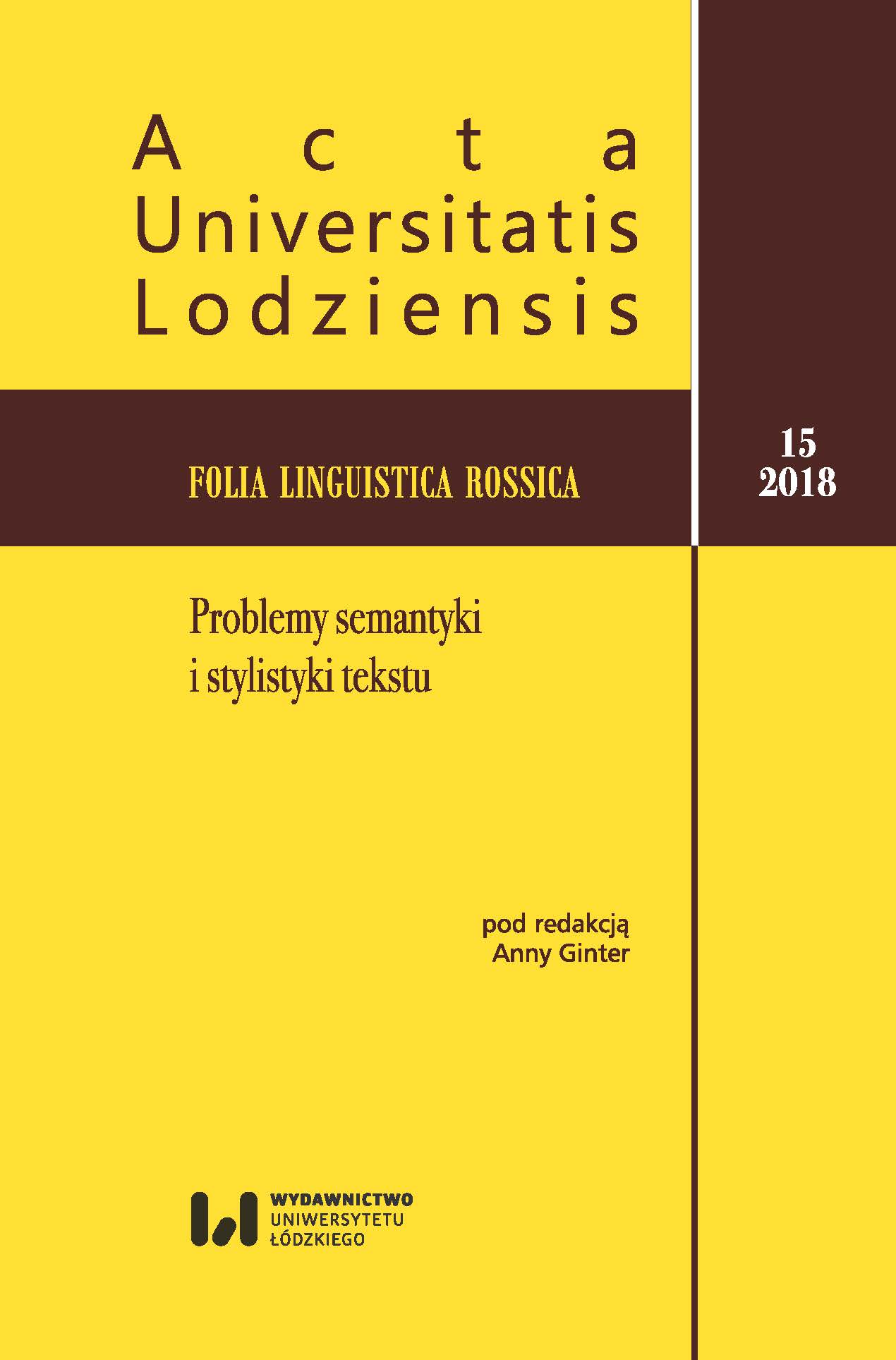The colors of presence and absence in Lolita
DOI:
https://doi.org/10.18778/1731-8025.15.20Keywords:
synesthesia, synesthetic metaphors, English-Polish translationAbstract
The multiplicity of the phenomenon of synesthesia has been a subject of intense scientific research performed mainly within a relatively narrow field of neurobiology or psychiatry (see e.g. Cytowic 2002; Cytowic and Eagleman 2009; Grossenbacher and Lovelace 2001; Sagiv 2009; J. E.Harrison and S.Baron-Cohen 1997), for which it is mostly a medical condition of the brain. However, synesthesia has also become a target of many linguistic endeavors as its realizations through language give rise to what is called a ‘synesthetic metaphor’ – a spontaneous linguistic production and/or a well-thought stylistic device. The world-famous Nabokov’s masterpiece Lolita is by far one of his most synesthesia-laden prose writings and it alone provided a fertile ground of research in both English and Russian, and many other languages to which the novel has been translated (see e.g. Ginter 2008; Zasowska 2012; Ginter 2016). The following paper aims at investigating the realizations of the English synesthetic metaphors in Lolita in the two Polish translations available in the literature: that of Stiller (1991) and that of Kłobukowski (1997). Of crucial importance is the function of color, a searchlight of some kind, beaming only on those who count. It doubtless centralizes Lolita in the novel and therefore may be called the ‘segregating’ factor: it is there whenever the girl is present and vanishes when she is no longer in sight. As has also been noticed by Zasowska (2013), the distribution of synethesia is closely linked with the sex of a character, and again it is Lolita that gathers almost all of the synesthetic metaphors for herself. Not even a vaguely similar tendency has been observed in the case of the other characters, both male and female, which are ‘synesthetically’ neglected by the author, that being an apparently conscious decision on the part of the writer. The present analysis consists of two main parts. First, all of the color-related synesthetic metaphors have been found, counted and categorized. The same was done with metaphors relating to the senses of sight, touch and taste. Second, their two Polish translations were compared and contrasted in terms of the synesthetic metaphor construction. The findings have shown that in most cases synesthetic metaphor was maintained by the translators throughout the novel and successfully rendered into the Polish language. However, different stylistic devices and lexical markers were used in doing so.
References
Berger J. (1972), Ways of Seeing, Penguin Books, London.
Google Scholar
Burr V. (2002), Gender and Psychology, Routledge, London.
Google Scholar
Cytowic R. (2002), Synesthesia: The Union of the Senses,.The MIT Press, Massachusetts Institute of Technology.
Google Scholar
Cytowic R., Eagleman D. (2009), Wednesday is Indigo Blue. Discovering the Brain of Synesthesia, Afterword by Dimitri Nabokov, The MIT Press Massachusetts Institute of Technology.
Google Scholar
Ginter A. (2008), Barwy w Lolicie Vladmira Nabokova, „Conversatoria Linguistica”, nr II, s. 49–62.
Google Scholar
Ginter A. (2016), Vladmir Nabokov i jego synestezyjny świat, Wydawnictwo Uniwersytetu Łódzkiego, Łódź.
Google Scholar
Grossenbacher P.G. (1997), Perception and sensory information in synesthetic experience, [w:] Synesthesia: Classic and Contemporary Readings, red. S. Baron-Cohen i J. Harrison, Blackwell, s. 148–172.
Google Scholar
Grossenbacher P. G., Lovelace Ch. (2001), Mechanisms of synesthesia: cognitive and physiological constraints, „TRENDS in Cognitive Sciences”, Vol. 5, No. 1.
Google Scholar
Harrison J.E., Baron-Cohen S. (1997), Synesthesia: phenomenology and neuropsychology – a review of current knowledge, [w:] Synesthesia: Classic and Contemporary Readings, red. S. Baron-Cohen i J. Harrison, Blackwell, s. 17–39.
Google Scholar
Nabokov V. (1991), Lolita, tłum. R. Stillera, Państwowy Instytut Wydawniczy, Warszawa.
Google Scholar
Nabokov V. (1995), Lolita, Penguin Books, England.
Google Scholar
Nabokov V. (1997), Lolita, tłum. M. Kłobukowskiego. Wydawnictwo DaCapo.
Google Scholar
Robertson L., Sagiv N. (2005), Synesthesia. Perspectives from Cognitive Neuroscience, Oxford University Press.
Google Scholar
Scott M. (2012), WordSmith Tools version 6, Stroud: Lexical Analysis Software.
Google Scholar
Zasowska M. (2012), Synesthesia through Translation. A Case of Vladimir Nabokov’s Prose Writings; nieopublikowana praca magisterska.
Google Scholar
Zasowska M. ( 2013), Gender-related aspects of Nabokov’s synethesia, [w:] Gender w kulturze, języku i literaturze, red. J. Arabski, A. Łyda i J. Ziębka, Wyższa Szkoła Zarządzania Marketingowego i Języków Obcych, Katowice, s. 49–63.
Google Scholar
Downloads
Published
How to Cite
Issue
Section
License

This work is licensed under a Creative Commons Attribution-NonCommercial-NoDerivatives 4.0 International License.









